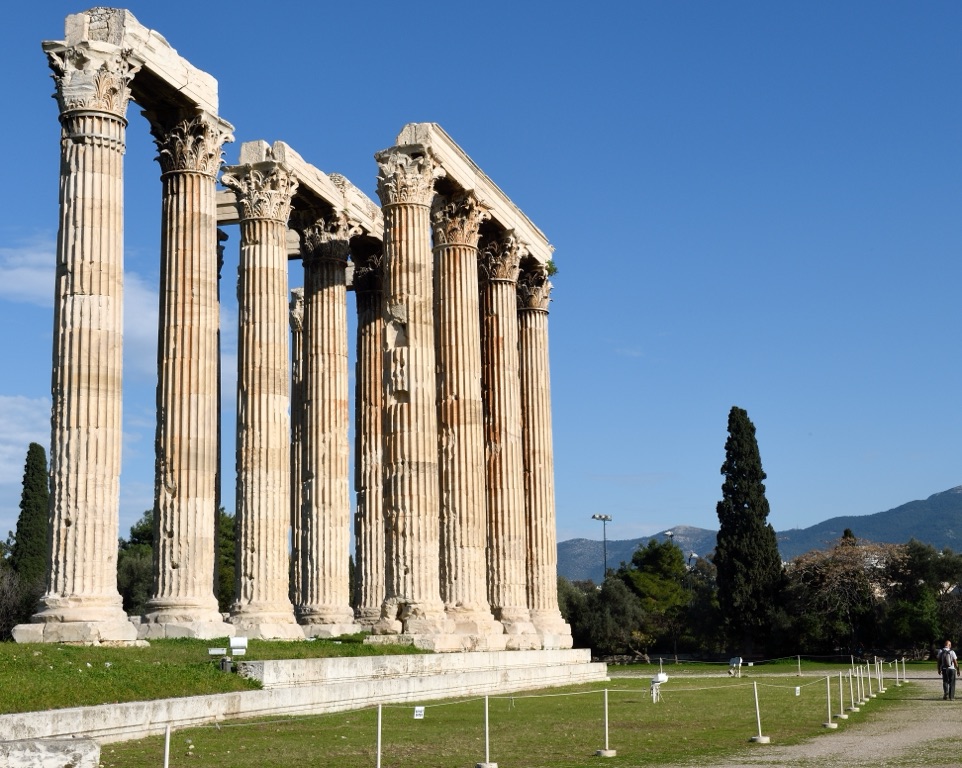The Temple of Olympian Zeus, also known as the Olympieion, is a colossal ruined temple in the center of Athens, Greece. It was dedicated to Zeus, king of the Olympian gods. Construction began in the 6th century BC during the rule of the Athenian tyrants, who envisaged building the greatest temple in the ancient world, but it was not completed until the reign of the Roman Emperor Hadrian in the 2nd century AD, some 638 years after the project had begun. During the Roman periods, it was renowned as the largest temple in Greece and housed one of the largest cult statues in the ancient world.
Get your dose of History via Email
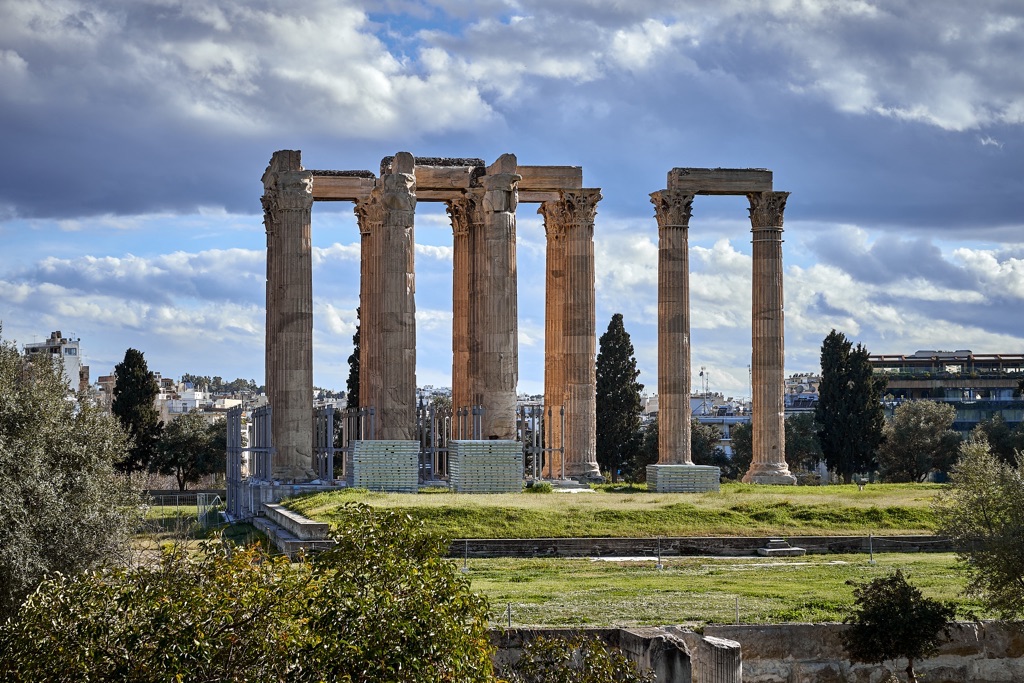
What is the historical significance of the Temple of Olympian Zeus and what role did it play in ancient Greek society and culture?
The Temple of Olympian Zeus played a significant role in ancient Greek society and culture. As a monumental temple dedicated to Zeus, the king of the gods, it served as a symbol of the power and religious devotion of the Athenian people. The temple’s construction, which spanned several centuries, reflects the changing fortunes and political upheavals of Athens, from the tyranny of the 6th century BC to the ascendancy of Rome in the 2nd century AD.
The temple was also a major center of religious activity. It was the site of numerous festivals and rituals, including the Olympic Games, which were held in honor of Zeus. The temple’s vast size and grandeur made it a popular destination for pilgrims and tourists, and it was often depicted on coins and other artifacts, attesting to its cultural and symbolic importance.
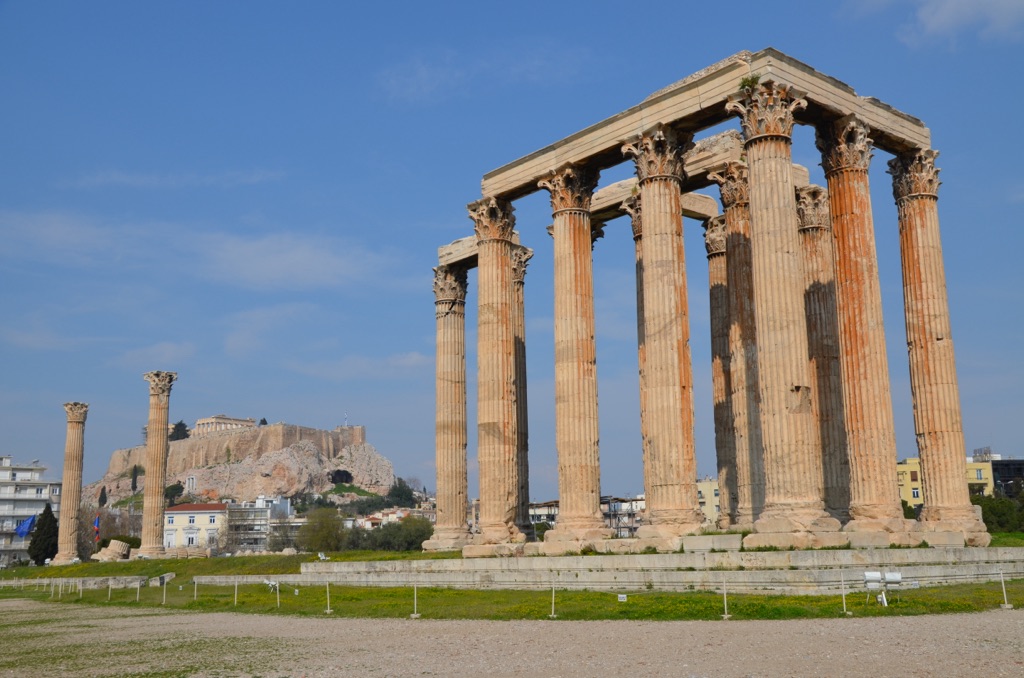
However, the temple’s significance extended beyond its religious function. It was also a potent symbol of political power and authority. The decision to build such a massive and costly structure was a clear demonstration of the ambition and resources of the Athenian tyrants and later, the Roman emperors. The temple’s completion by Hadrian, in particular, was seen as a testament to the power and glory of Rome.
Despite its eventual ruin, the Temple of Olympian Zeus continues to hold historical significance. Its remains are a testament to the architectural and artistic achievements of ancient Greece and Rome, and its history offers valuable insights into the religious, political, and cultural dynamics of the ancient world.
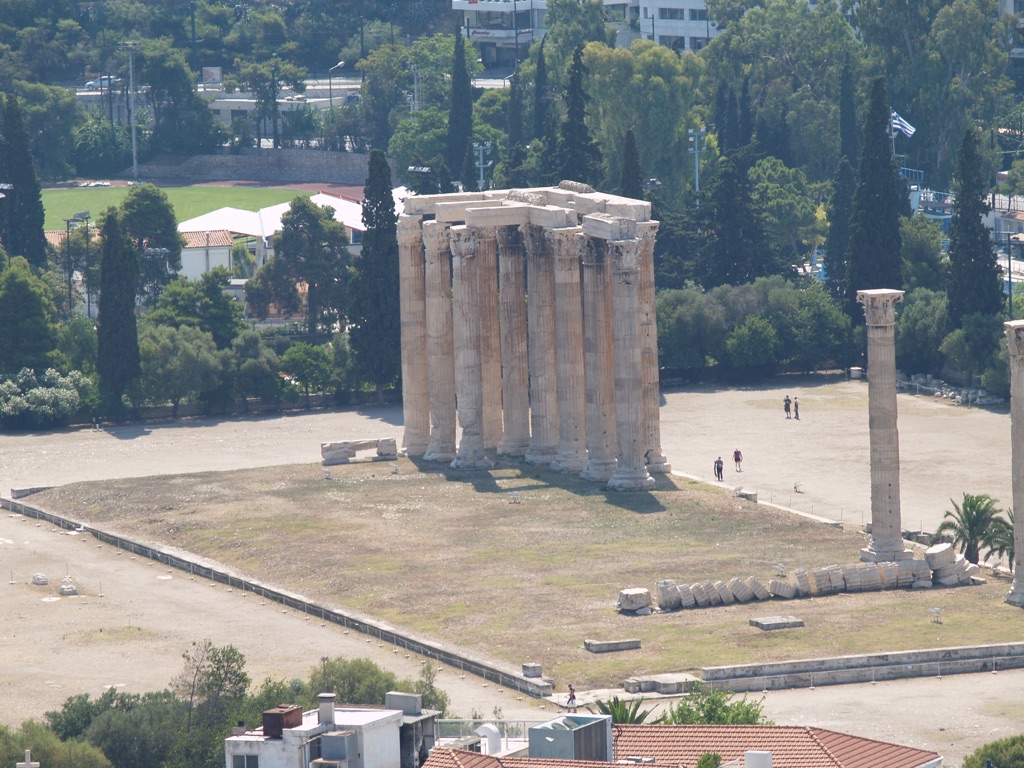
What are some of the key architectural features and discoveries made at the Temple of Olympian Zeus?
The Temple of Olympian Zeus is notable for its massive size and grandeur. It was designed in the Corinthian order, the last developed of the three principal classical orders of ancient Greek and Roman architecture. The temple was rectangular in shape, with a peripteral colonnade of 104 Corinthian columns, each standing 17 meters high. The columns were carved with intricate acanthus leaves, a characteristic feature of the Corinthian order.
The temple housed a gigantic statue of Zeus, which was one of the largest cult statues in the ancient world. The statue, made of ivory and gold, depicted Zeus seated on a throne, his skin of ivory, his robe of gold. It was considered one of the Seven Wonders of the Ancient World.
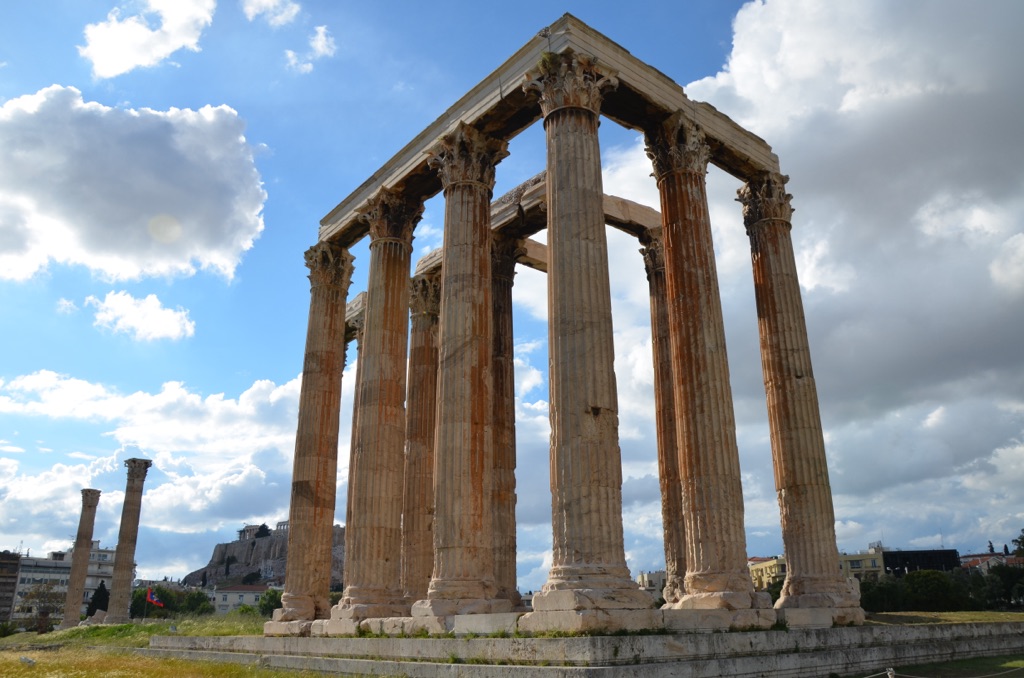
Despite its ruin, significant discoveries have been made at the temple site. Excavations have uncovered fragments of the colossal statue of Zeus, as well as numerous other artifacts, including inscriptions, coins, and architectural elements. These findings have provided valuable insights into the temple’s construction, decoration, and use.
Perhaps the most significant discovery is the temple’s foundation and architectural plan, which have allowed archaeologists to reconstruct its original appearance and understand its architectural significance. The temple’s design and construction techniques have been studied extensively, contributing to our understanding of ancient Greek and Roman architecture.
The Temple of Olympian Zeus, despite its ruin, remains an important archaeological site. Its remains offer a fascinating glimpse into the religious, cultural, and architectural practices of the ancient world.
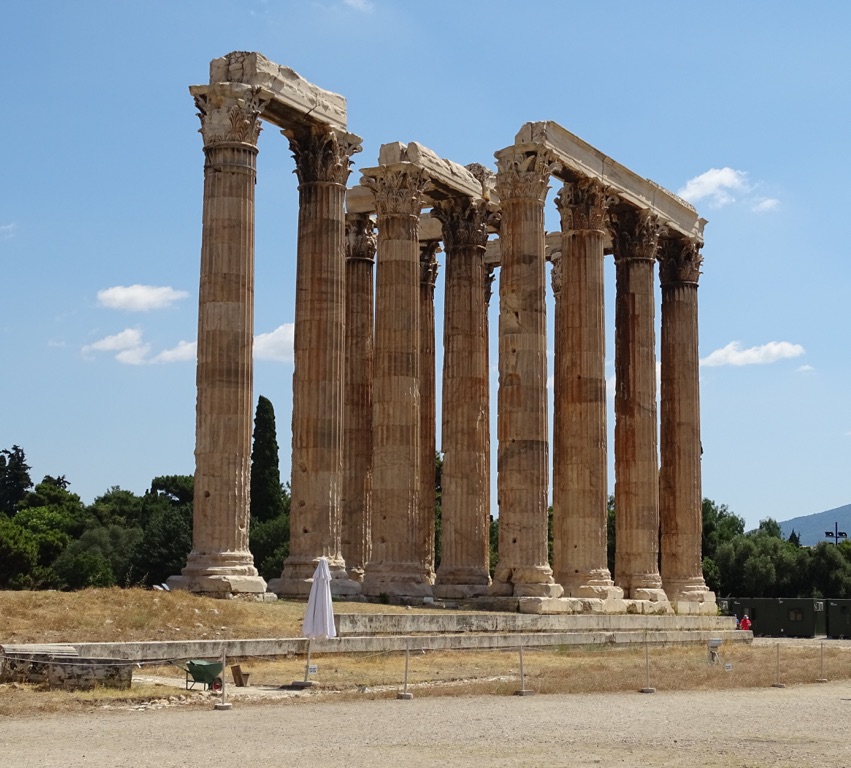
What is the historical significance of the Temple of Olympian Zeus and what role did it play in ancient Greek culture and religion?
The Temple of Olympian Zeus was not just a monumental architectural achievement, but also a central figure in the religious life of ancient Greece. As the largest temple in Greece, it was dedicated to Zeus, the king of the gods, and played a significant role in the religious practices and beliefs of the ancient Greeks.
The temple was the site of numerous religious festivals and rituals, most notably the Olympic Games, which were held in honor of Zeus. These games were one of the most important events in the Greek religious calendar, and the temple served as the backdrop for the athletic contests and religious ceremonies that were part of the games.
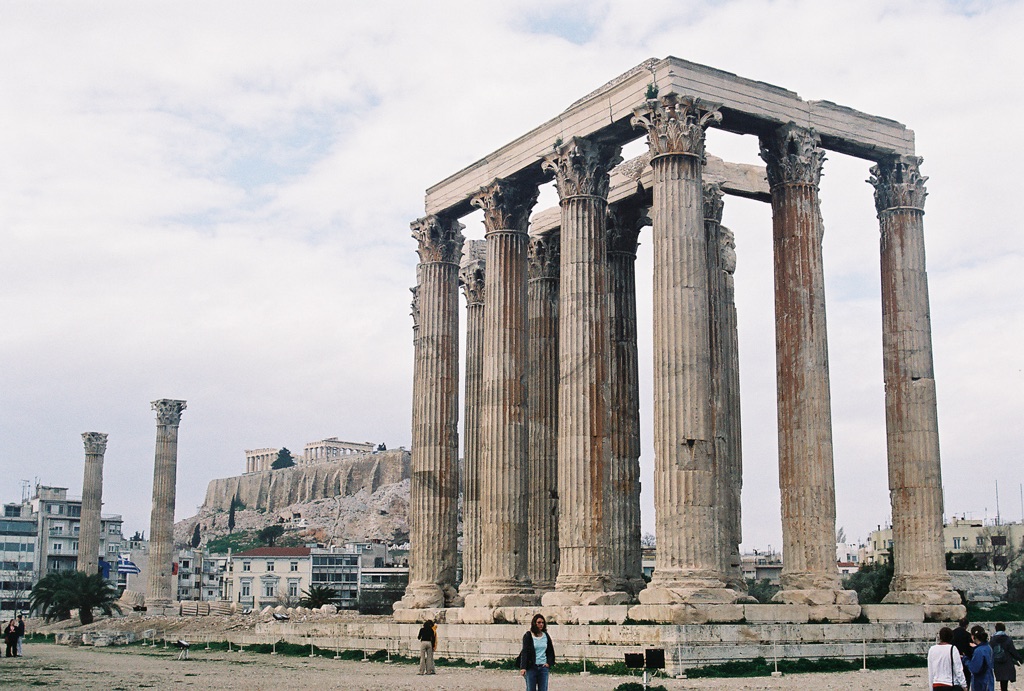
The temple also housed a colossal statue of Zeus, which was one of the largest cult statues in the ancient world. This statue was not just an artistic masterpiece, but also a religious icon that was worshipped by the ancient Greeks. The statue was believed to be imbued with divine power, and it was the focus of religious rituals and offerings.
The temple’s religious significance extended beyond its role as a place of worship. It was also a symbol of the religious devotion and piety of the Athenian people. The decision to build such a massive and costly temple was a clear demonstration of their commitment to the worship of Zeus and the other Olympian gods.
Despite its eventual ruin, the Temple of Olympian Zeus continues to hold religious significance. Its remains are a testament to the religious beliefs and practices of the ancient Greeks, and its history offers valuable insights into the role of religion in ancient Greek society.
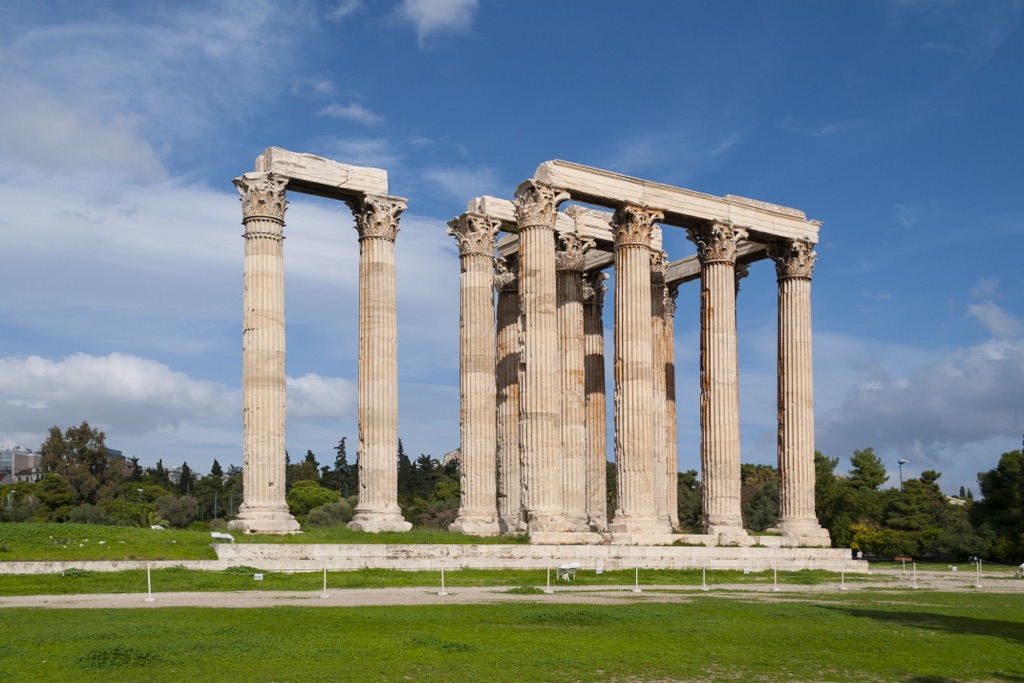
What are some of the key architectural features and techniques used in the construction of the Temple of Olympian Zeus?
The Temple of Olympian Zeus is a testament to the architectural prowess of the ancient Greeks and Romans. It was designed in the Corinthian order, the most ornate of the three principal classical orders of ancient Greek and Roman architecture. The temple’s design was characterized by its massive size, symmetrical proportions, and intricate decoration.
The temple was rectangular in shape, with a peripteral colonnade of 104 Corinthian columns, each standing 17 meters high. These columns were carved with intricate acanthus leaves, a characteristic feature of the Corinthian order. The temple’s colonnade was one of the largest and most impressive in the ancient world, and it served as a model for later Roman temples.
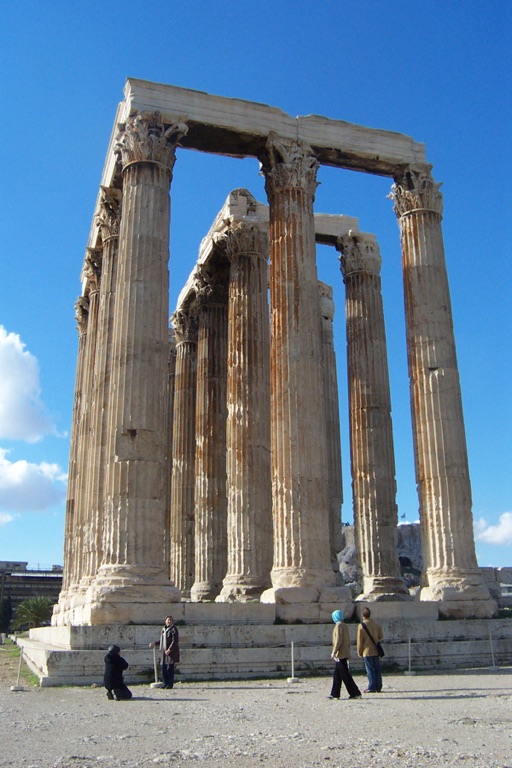
The temple’s construction involved a variety of techniques, including stone carving, metalworking, and painting. The columns and other architectural elements were carved from marble, a material that was abundant in Greece and was prized for its beauty and durability. The statue of Zeus was made of ivory and gold, materials that were associated with the divine and were used to convey the statue’s sacredness.
The temple’s construction was a massive undertaking that required significant resources and labor. It was built in several stages over several centuries, reflecting the changing fortunes and political upheavals of Athens. Despite the challenges, the temple’s construction was a remarkable achievement, demonstrating the skill and ingenuity of the ancient Greek and Roman architects and builders.
The Temple of Olympian Zeus, despite its ruin, remains an important architectural landmark. Its design and construction techniques have been studied extensively, contributing to our understanding of ancient Greek and Roman architecture.
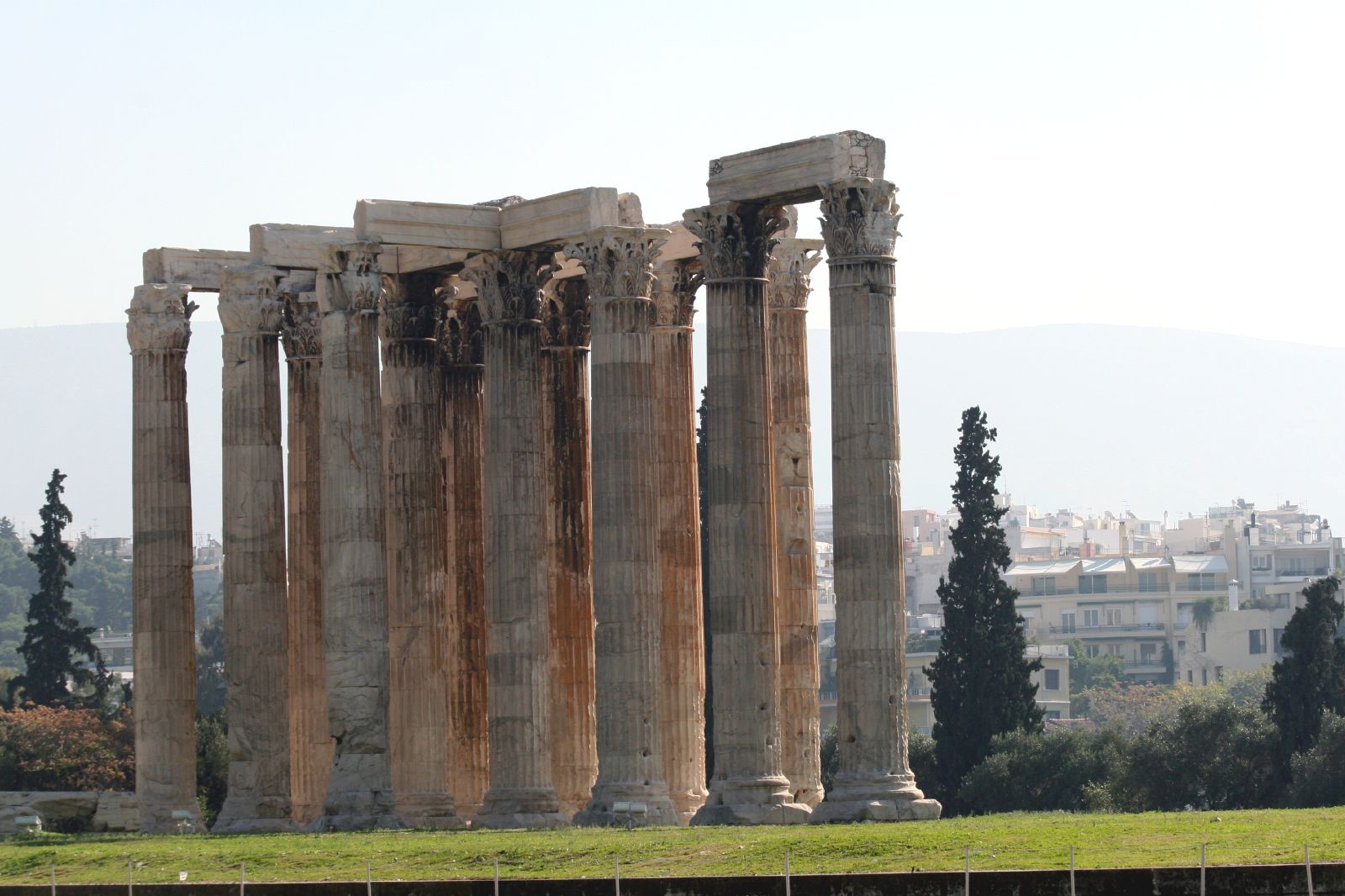
Conclusion and Sources
In conclusion, the Temple of Olympian Zeus is a monumental testament to the religious, cultural, and architectural achievements of ancient Greece and Rome. Its history and remains offer valuable insights into the ancient world, from the religious practices and beliefs of the ancient Greeks to the architectural prowess of the Greeks and Romans. Despite its ruin, the temple continues to captivate and inspire, a testament to the enduring legacy of the ancient world.
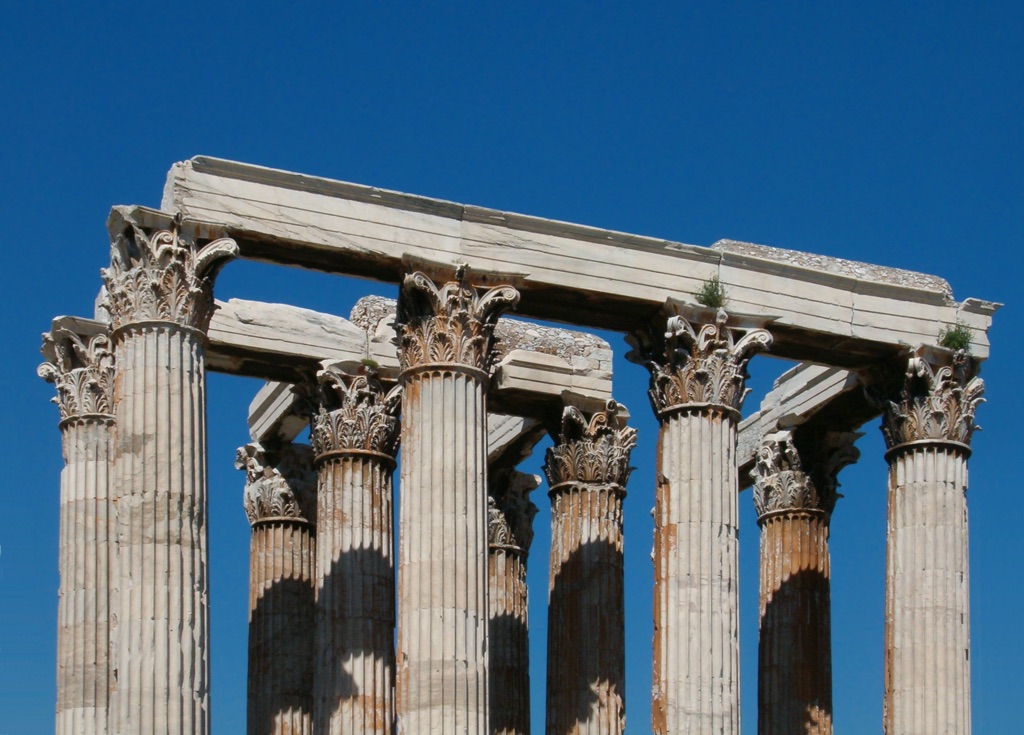
For further reading and verification of the information provided, the following sources are recommended:

